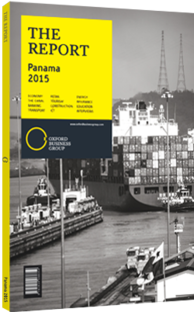Felipe Chapman, President, Bolsa de Valores de Panamá: Interview

Interview: Felipe Chapman
How will 2015 market growth compare to 2014?
FELIPE CHAPMAN: The volume of transactions grew by 4.7% year-on-year in 2014, with trading close to $5.3bn. Secondary market activity increased due to a rise in transactions involving common shares and debt instruments – mainly private sector bonds. Meanwhile, there was a slight decrease in the volume of activity in government securities auctions, mainly due to the fact that there were fewer treasury auctions that year.
The perspectives for 2015 are not very clear yet. What we do know, however, is that the country’s macroeconomic performance is sending positive signs, with growth above 6% and a likely increase in interest rates to be followed by a decrease in inflation. These are all conditions that could allow the stock market to register the numbers seen in 2014, or even surpass them. Nevertheless, it is important to understand that stock market activity does not necessarily reflect the country’s economic performance – though you do need a high degree of stability and soundness to create adequate conditions for a well-performing market.
The private sector is and will continue to be the main generator of activity in the Panama stock market, through corporate debt and different kinds of shares. If we look at the public sector’s budget and its financing needs, it is clear that it will have to reach out for financing, either through local or international markets. Given that the country’s risk premium is lower than the international market, and transaction costs in Panama are lower than elsewhere, a large share of government financing could be done through the stock market.
What measures would encourage greater private sector involvement in the stock market?
CHAPMAN: Rather than focusing on incentives, which are something very generic, it is preferable to focus on more specific measures. There is no need to add more policies aimed at incentivising investors to come; the necessary policies are already in place. This, of course, does not mean that private companies in the stock market should not be encouraged to participate in stock market operations.
What is most needed are greater efforts to trade public debt. It is equally important to maintain the predictability and stability of the rules of the game. With this in place, activity and opportunities can be generated by favourable market conditions. In addition, there is increasing regulation of the banking sector, which may lead to more activity in the stock market, as this has been the case in many other countries.
Furthermore, if a particular mechanism with special fiscal breaks has helped to incentivise other countries’ stock market activity, we should study it carefully and analyse the possibility of implementing it in Panama. However, it is counterproductive to implement measures that have worked elsewhere if the local legislation and circumstances are not taken into account.
What are the main obstacles to more robust performance in Panama’s capital markets?
CHAPMAN: Today, institutional investors or those that are highly financially educated are the ones that invest through the stock market. This represents a very small percentage of society in an already small market. The majority of savers invest through banks, real estate or by direct investments in private companies. However, as economic activity improves, per capita income will continue to increase, leading people and companies to look for alternative investments. This in turn will generate more demand for such alternatives.
A cultural characteristic of the market needs to be taken into account. Investors typically buy debt instruments, bonds or short-term instruments, and keep them until expiry. In the share market, something similar happens; investors are more resistant to selling shares they have bought – this is part of the Panamanian idiosyncrasy. There is also a lack of collective investment vehicles, which help generate secondary market activity in other countries. Other factors include the population size and small number of listed companies.
You have reached the limit of premium articles you can view for free.
Choose from the options below to purchase print or digital editions of our Reports. You can also purchase a website subscription giving you unlimited access to all of our Reports online for 12 months.
If you have already purchased this Report or have a website subscription, please login to continue.

